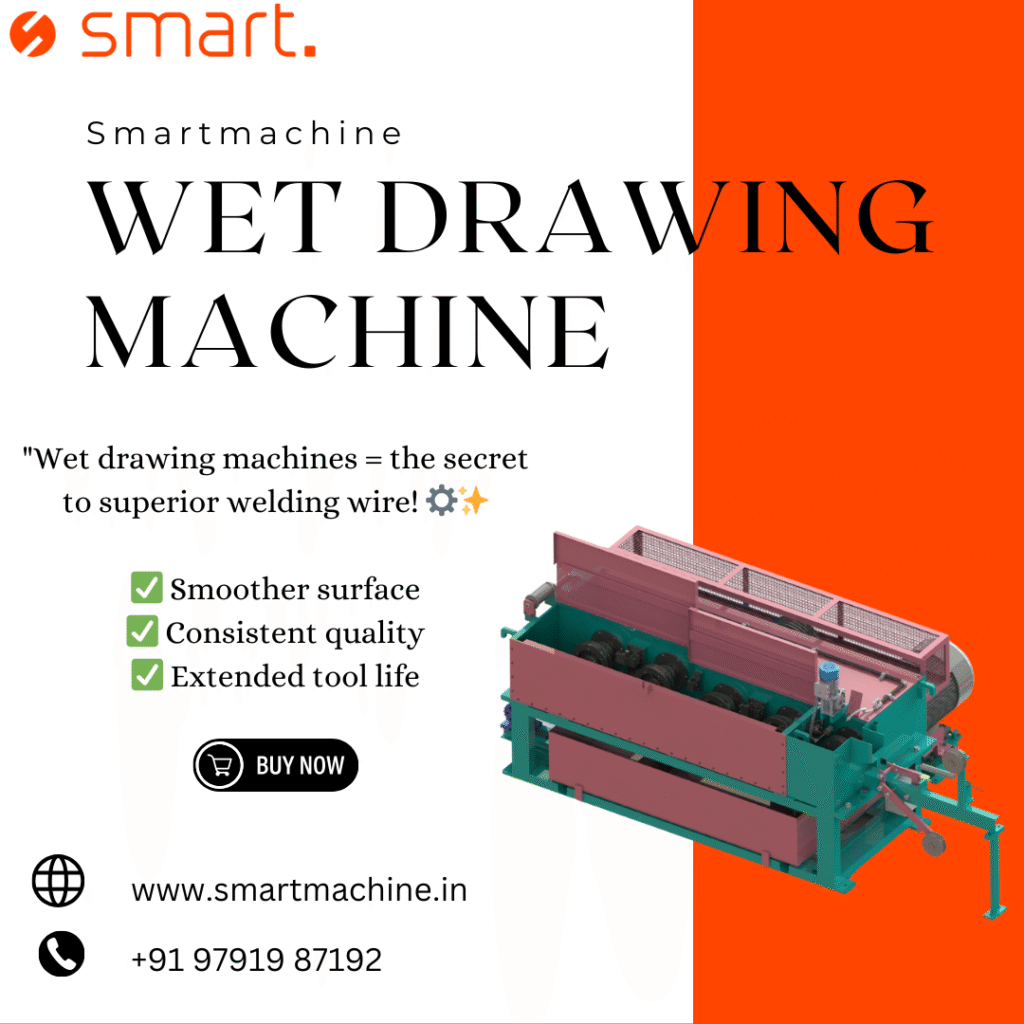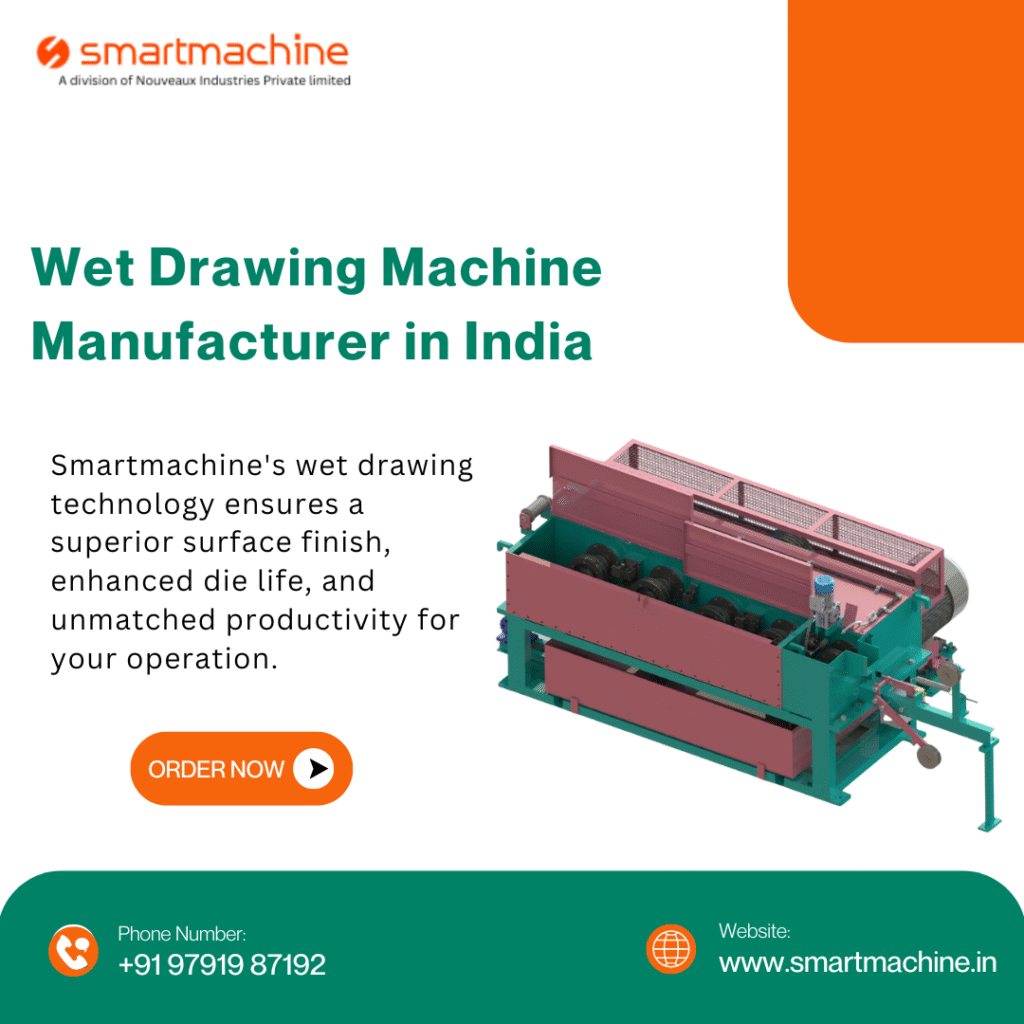In the world of wire manufacturing, not all wire is created equal. The difference between a standard product and a premium, high-performance one often comes down to one critical process: wet drawing. While various methods exist for reducing wire diameter, wet drawing machines stand apart as the gold standard for producing the highest quality wire demanded by today’s most advanced industries.
But what exactly makes this technology so indispensable? Let’s dive into the process and uncover why wet drawing machines are a non-negotiable asset for any manufacturer targeting the premium end of the market.

The Basics: What is a Wet Drawing Machine?
At its core, wire drawing is the process of pulling a metal wire (like steel, copper, or aluminum) through a series of progressively smaller dies to reduce its diameter and increase its length.
A wet drawing machine immerses this entire process in a flowing, lubricating, and cooling fluid—typically a specialized soap solution or oil. This “wet” environment is the key differentiator, creating conditions that are impossible to replicate with dry drawing methods.
The 5 Critical Reasons Wet Drawing Machines Are Essential for Quality
1. Superior Surface Finish and Brilliance
The constant flow of lubricant in a wet drawing machine performs two vital functions:
- Minimizes Friction: It creates a hydrodynamic film between the wire and the die, drastically reducing direct contact and preventing scratches, galling, and die marks.
- Polishing Action: The fluid continuously cleans the wire surface as it passes through the dies, resulting in an exceptionally smooth, bright, and clean finish that is highly sought after for applications like fine electronics, premium fasteners, and aesthetic architectural cables.
2. Enhanced Dimensional Accuracy and Consistency
Precision is paramount. The superior cooling and lubrication of the wet drawing process allow for much tighter control over the wire’s final dimensions.
- Reduced Heat Buildup: Excessive heat from friction causes thermal expansion, leading to inconsistent diameters. The cooling bath in a wet drawing machine maintains a stable temperature, ensuring the wire remains at its target size with extremely tight tolerances from start to finish of a production run.
3. Improved Mechanical Properties
Wire drawing isn’t just about making wire thinner; it’s also a method of cold working, which increases the wire’s tensile strength and hardness.
- Controlled Work Hardening: The wet process allows for a more uniform and controlled deformation of the metal’s crystal structure. This results in predictable and enhanced mechanical properties without introducing internal stresses that could lead to brittleness or failure.
4. Unmatched Process Efficiency for Fine and Ultra-Fine Wire
When producing fine and ultra-fine wires (often down to fractions of a millimeter), the challenges multiply. Wet drawing machines are uniquely suited for this task.
- Multi-Pass Capability: These machines are designed to make numerous consecutive draws in a single, continuous operation. The lubricant is reapplied before each die, making it possible to achieve massive total area reductions—exceeding 99% in some cases—without intermediate annealing.
- Breakage Prevention: The reduced friction and effective heat management are critical for handling the delicate nature of fine wires, significantly lowering the risk of breakage and production downtime.

5. Extended Die Life and Reduced Operational Costs
While the initial investment in a wet drawing machine might be higher, the long-term operational savings are substantial.
- Die Protection: The lubricant not only protects the wire but also the expensive tungsten carbide or diamond dies. By minimizing abrasive wear and heat damage, wet drawing dramatically extends die life, reducing replacement frequency and maintenance costs.
Where is Wet Drawn Wire Mandatory?
The superior qualities imparted by wet drawing make it the required process for a wide range of high-value applications:
- Automotive Industry: Tire bead wire, clutch cables, and other critical components where fatigue resistance and reliability are non-negotiable.
- Electronics and Electromagnetics: Enameled copper wire for motors, transformers, and solenoids requires a perfectly smooth base to ensure uniform insulation coating.
- Aerospace and Medical: High-strength, precision wires for surgical tools, guidewires, and aerospace cabling.
- Telecommunications: Fine copper and alloy wires for data transmission cables.
- Fastener Manufacturing: High-quality screws, bolts, and rivets that require excellent formability and surface finish.
Wet Drawing vs. Dry Drawing: A Quick Comparison
| Feature | Wet Drawing Machine | Dry Drawing Machine |
| Lubrication | Immersed in fluid | Coated with lime or soap powder |
| Surface Finish | Excellent, bright & smooth | Good, but can be matte |
| Heat Management | Superior cooling | Limited cooling |
| Best For | Fine wires, high reduction rates, non-ferrous metals | Larger diameter wires, rod breakdown, ferrous metals |
| Operating Cost | Higher efficiency, longer die life | Lower initial cost, higher die wear |
Conclusion: An Investment in Quality and Capability
In the competitive landscape of wire production, settling for “good enough” is not a viable strategy for growth. A wet drawing machine is not merely a piece of equipment; it is a foundational technology that enables manufacturers to meet the stringent demands of modern, high-tech industries.
By ensuring exceptional surface quality, precise dimensions, and enhanced mechanical properties, wet drawing transforms raw wire into a premium, high-value product. For any manufacturer serious about quality, efficiency, and competing in the top tier of the market, investing in advanced wet drawing technology is not just a choice—it’s a critical necessity.
